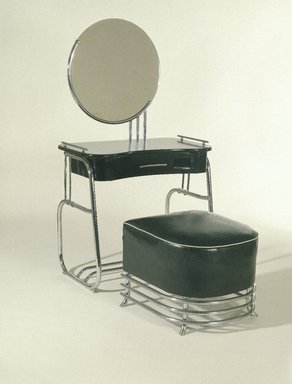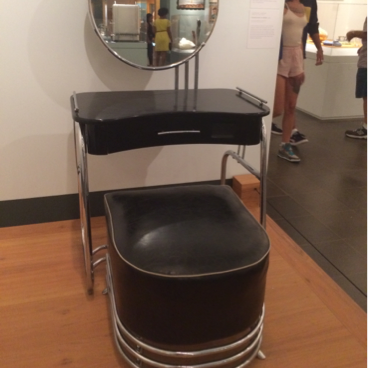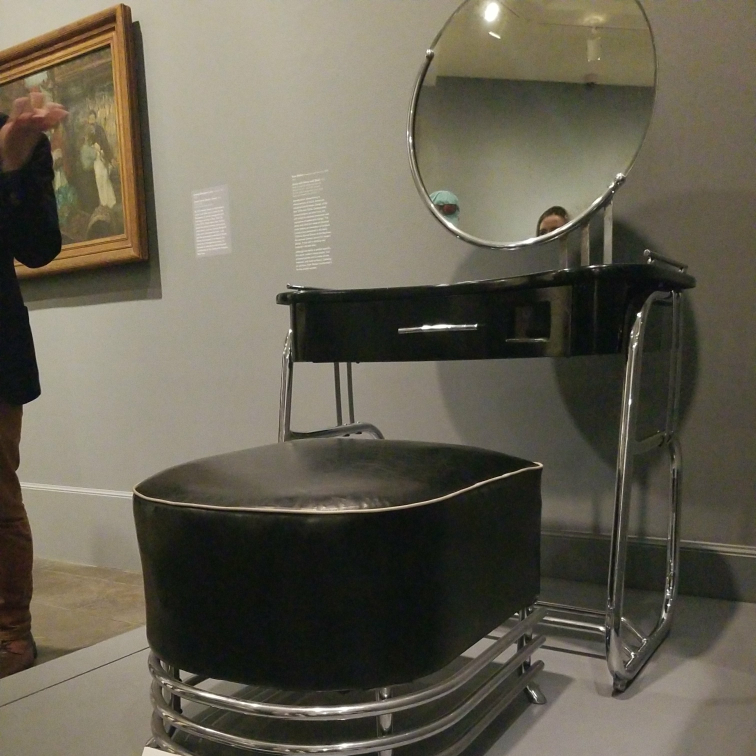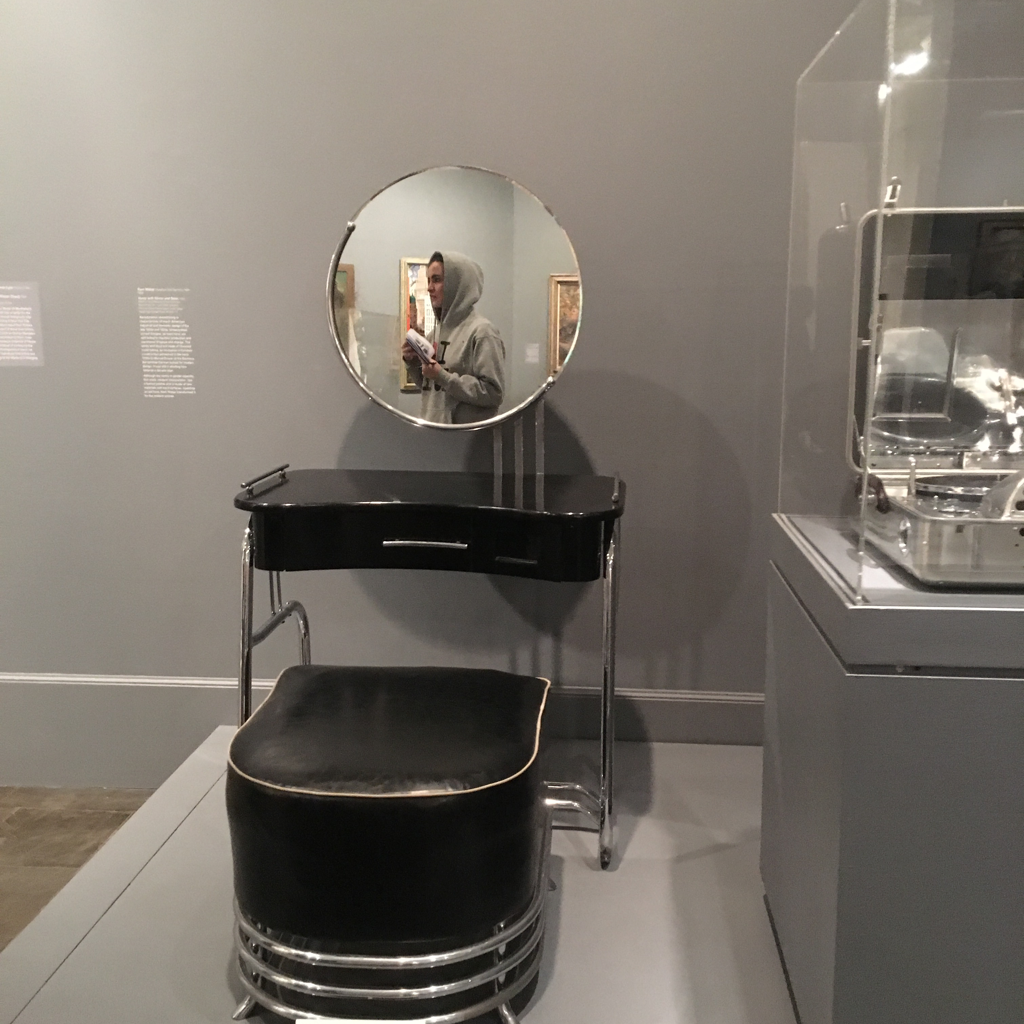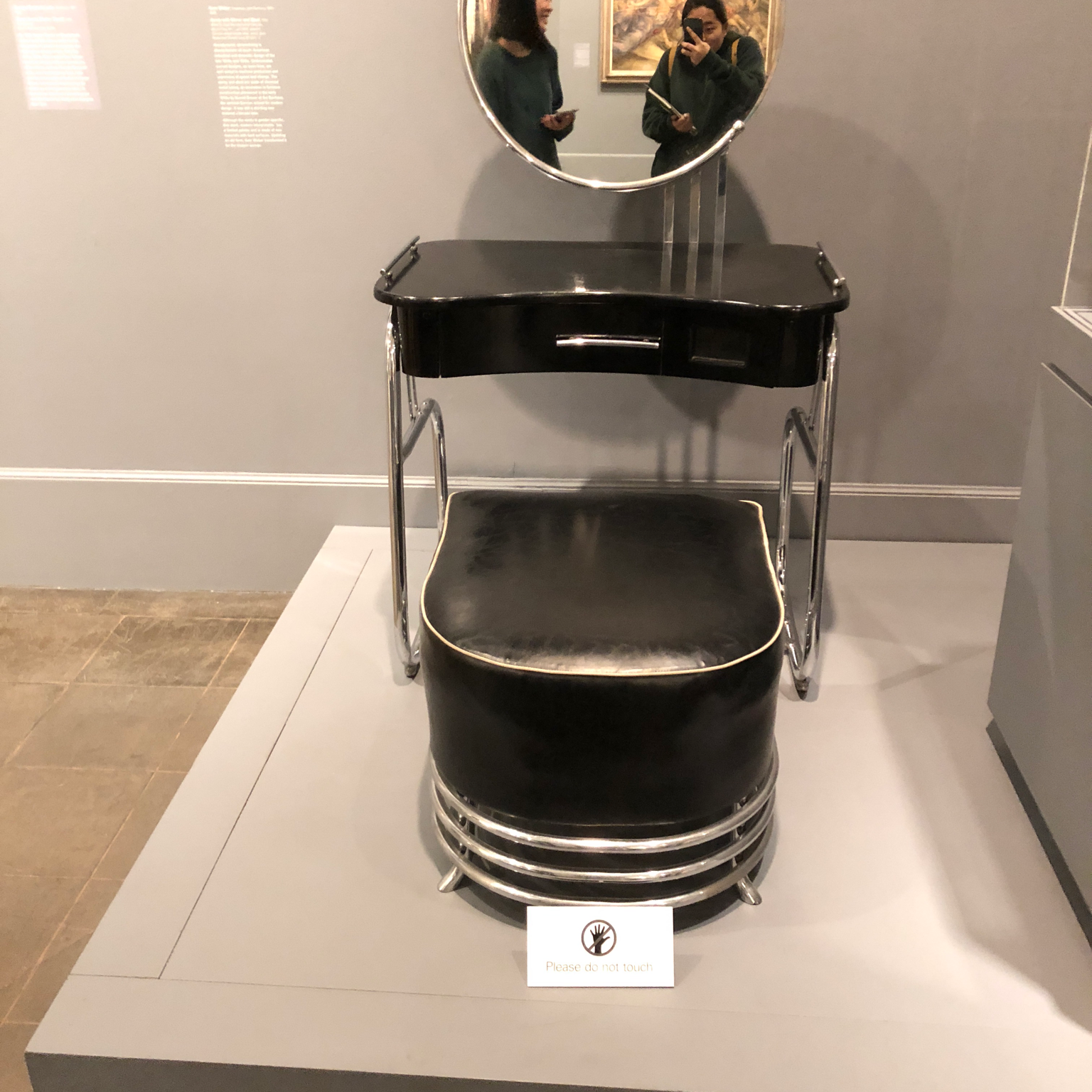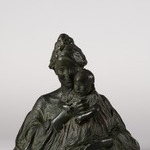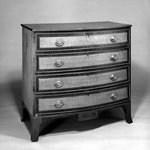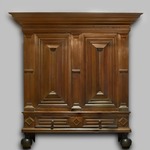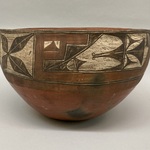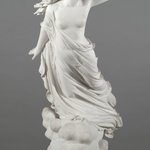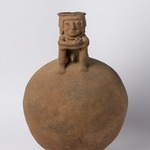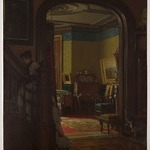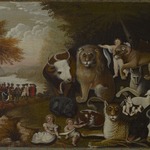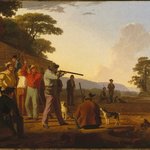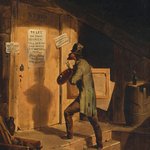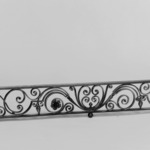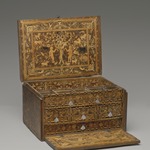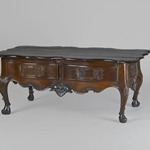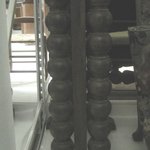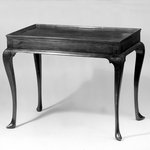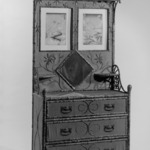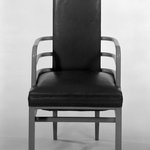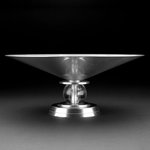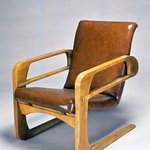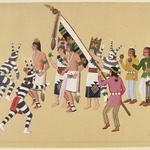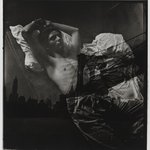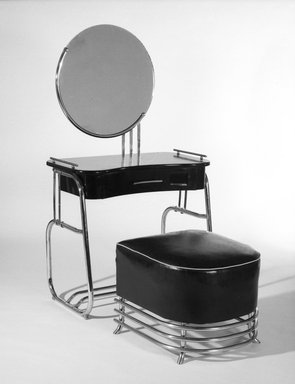
Stool
Decorative Arts and Design
Aerodynamic streamlining is characteristic of much American industrial and domestic design of the late 1920s and 1930s. Undecorated, curved designs, as seen here, are well suited to machine production and expressive of speed and change. The vanity and stool are made of chromed metal tubing, an innovation in furniture construction pioneered in the early 1920s by Marcel Breuer at the Bauhaus, the seminal German school for modern design. It was still a startling new material a decade later.
Although the vanity is gender-specific, this stark, modern interpretation has a limited palette and is made of new materials with hard surfaces. Updating an old form, Kem Weber transformed it for the modern woman.
Although the vanity is gender-specific, this stark, modern interpretation has a limited palette and is made of new materials with hard surfaces. Updating an old form, Kem Weber transformed it for the modern woman.
MANUFACTURER
Lloyd Manufacturing Company
MEDIUM
Chrome-plated tubular steel, upholstery
DATES
ca. 1934
DIMENSIONS
17 1/2 x 21 x 22 1/2 in. (44.5 x 53.3 x 57.2 cm) (show scale)



COLLECTIONS
Decorative Arts and Design
ACCESSION NUMBER
87.123.2
CREDIT LINE
Modernism Benefit Fund
CATALOGUE DESCRIPTION
Low, four-legged stool, en suite with vanity and mirror (87.123.1a-b). Half an oval in plan, consisting of tubular steel legs and continuous stretchers wrapping around all but front side of stool. Seat is deep (wood-framed?) unit sitting atop legs and covered in black simulated leather.
EXHIBITIONS
MUSEUM LOCATION
This item is not on view
CAPTION
Kem Weber (American, born Germany, 1889–1963). Stool, ca. 1934. Chrome-plated tubular steel, upholstery, 17 1/2 x 21 x 22 1/2 in. (44.5 x 53.3 x 57.2 cm). Brooklyn Museum, Modernism Benefit Fund, 87.123.2. Creative Commons-BY (Photo: , 87.123.1a-b_87.123.2_bw.jpg)
IMAGE
group, 87.123.1a-b_87.123.2_bw.jpg.
"CUR" at the beginning of an image file name means that the image was created by a curatorial staff member. These study images may be digital point-and-shoot photographs, when we don\'t yet have high-quality studio photography, or they may be scans of older negatives, slides, or photographic prints, providing historical documentation of the object.
RIGHTS STATEMENT
Creative Commons-BY
You may download and use Brooklyn Museum images of this three-dimensional work in accordance with a Creative Commons license. Fair use, as understood under the United States Copyright Act, may also apply.
Please include caption information from this page and credit the Brooklyn Museum. If you need a high resolution file, please fill out our online application form (charges apply).
For further information about copyright, we recommend resources at the United States Library of Congress, Cornell University, Copyright and Cultural Institutions: Guidelines for U.S. Libraries, Archives, and Museums, and Copyright Watch.
For more information about the Museum's rights project, including how rights types are assigned, please see our blog posts on copyright.
If you have any information regarding this work and rights to it, please contact copyright@brooklynmuseum.org.
RECORD COMPLETENESS
Not every record you will find here is complete. More information is available for some works than for others, and some entries have been updated more recently. Records are frequently reviewed and revised, and we welcome any additional information you might have.
